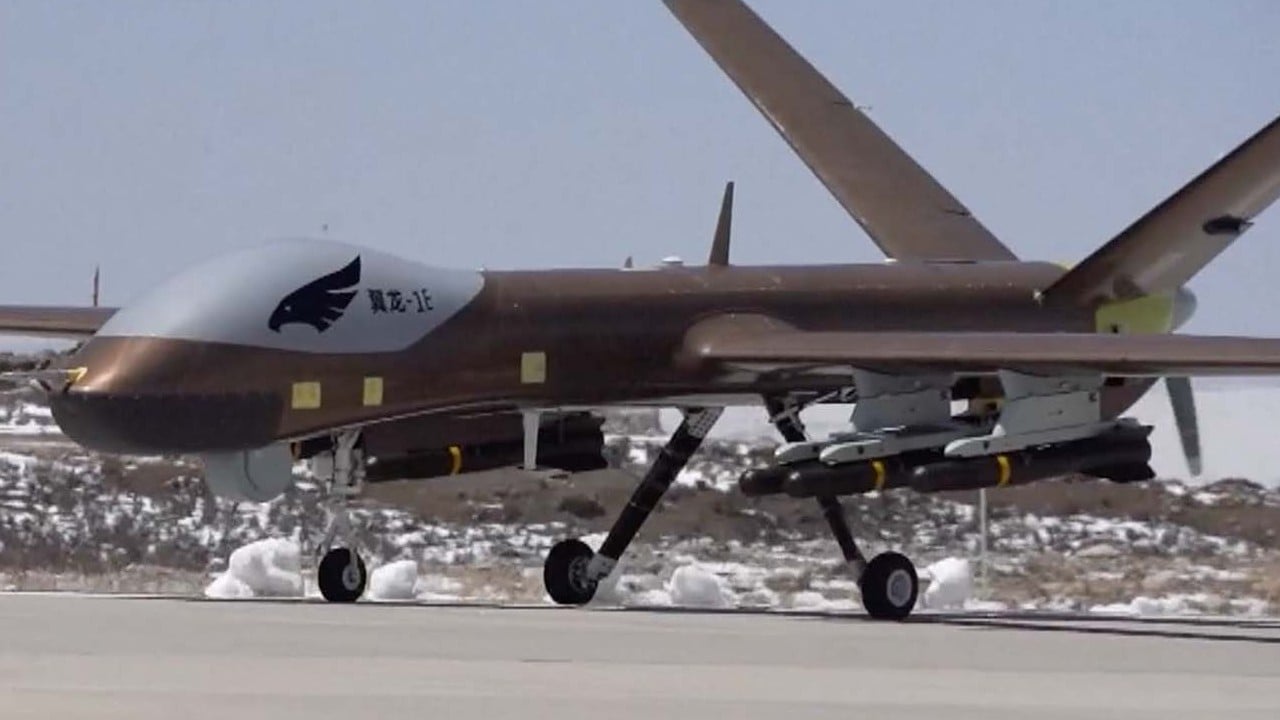
China showcases never before seen range of unmanned maritime vehicles at Zhuhai air show
- Numbers far exceed UMVs unveiled at previous editions of biennial event
- China has been pouring resources into sector that could change naval warfare, in bid to catch up with the US and Canada
This year’s Zhuhai air show – China’s largest aviation event and aerospace trade expo – also offered a rare glimpse into its latest unmanned maritime vehicles.
Albeit less eye-catching than unmanned aerial vehicles, like the newly revealed Wing Loong 3, these maritime systems can also perform reconnaissance and surveillance duties, as well as precision strikes, and therefore play a significant military role.
According to Chinese digital news outlet The Paper, mega conglomerate China State Shipbuilding Corporation (CSSC) displayed a variety of unmanned underwater vehicles (UUVs) at the air show, in numbers far exceeding those unveiled at previous editions of the biennial event.
These included the Haishen 6000 (Poseidon 6000), a 7.6 metre-long UUV with a displacement of 3 tonnes, a maximum working depth of 6,000 metres (19,700 feet) and able to reach speeds of up to 4 knots. Multiple sensors on board can help it detect mines, and it can also carry towed acoustic decoys that use sonar signals to deflect active torpedoes.
Also showcased for the first time was the CSSC’s recently released EA63, a remotely operated vehicle built to be stationed on surface ships for mine-sweeping action, able to detect and neutralise marine mines both at depth and on the seabed.
China’s world-first drone carrier is an autonomous new ‘marine species’
Two unmanned coastal defence vessels, the L30 Watcher and M75 Protector, were also displayed, nationalist tabloid Global Times reported. Both are produced by Yunzhou, a Zhuhai-based technology company specialising in developing unmanned vessels.
The 7.5 metre by 2.6 metre L30 Watcher is an unmanned security and patrol vessel, with a maximum speed of 35 knots and range of up to 220 nautical miles. It can serve both civilian and military purposes, such as reconnaissance, tracking and warning, as well as anti-terrorism, anti-smuggling, and emergency and rescue operations.
The M75 Protector, measuring 5.3 metres by 1.7 metres, can transport supplies and conduct patrols along oil pipelines.
China has stepped up research and development of unmanned maritime systems as it tries to keep pace with the likes of the United States and Canada.
Unmanned surface vessels: the next frontier in China-US military rivalry?
In June, China’s first domestically developed 200 ton class (181 tonne) unmanned surface vessel (USV) completed its first autonomous sea trial off Zhejiang province in eastern China.
Unmanned maritime platforms will be an important means of reconnaissance, surveillance, detection, intelligence collection, precision strike, and special tasks in future naval operations, Chinese military magazine Ordnance Industry Science Technology said in a recent article.
The massive application of unmanned combat platforms at sea would inevitably lead to profound changes in how naval warfare was carried out, it added.
These systems mainly consist of USVs, underwater vehicles featuring propulsion, and underwater gliders pushed by currents.
Maintenance costs are not high and threat to crew safety is lowered, with the added advantage of higher manoeuvrability and deployability in shallow waters.
Chinese scientists develop flying unmanned submarine
The article suggested that China could gradually replace traditional naval warfare platforms like submarines with unmanned systems, to carry out anti-submarine patrol, close-up reconnaissance and even live-fire attacks.
“It’s foreseeable that unmanned platforms will gradually become the main force in maritime confrontation. And they will become the key to seize information superiority, implement precise strikes, and complete special combat missions in information warfare,” the article said.


